Qantas: Structure, Leadership, and Strategies Report
VerifiedAdded on 2021/05/27
|10
|2811
|238
Report
AI Summary
This report provides a comprehensive analysis of Qantas' organisational structure, leadership style, and strategic approaches. It begins with an introduction to Qantas, highlighting its historical significance and current market position. The report then delves into the airline's organisational structure, explaining its use of both centralised and decentralised elements, its matrix structure, and its impact on information management. The leadership style of Qantas is examined, noting its evolution and the adoption of various styles, including democratic, participatory, and authoritarian approaches. The report also explores Qantas' strategies within and outside Australia, including diversification, cost leadership, and expansion strategies. Finally, the report offers a critical evaluation of Qantas' strategies and structure, concluding that its organisational structure is appropriate for its business requirements, supporting its ability to gain a competitive advantage. It emphasizes the flexibility of its leadership and the success of its strategies in a competitive environment. The report provides valuable insights into Qantas' success in the airline industry.
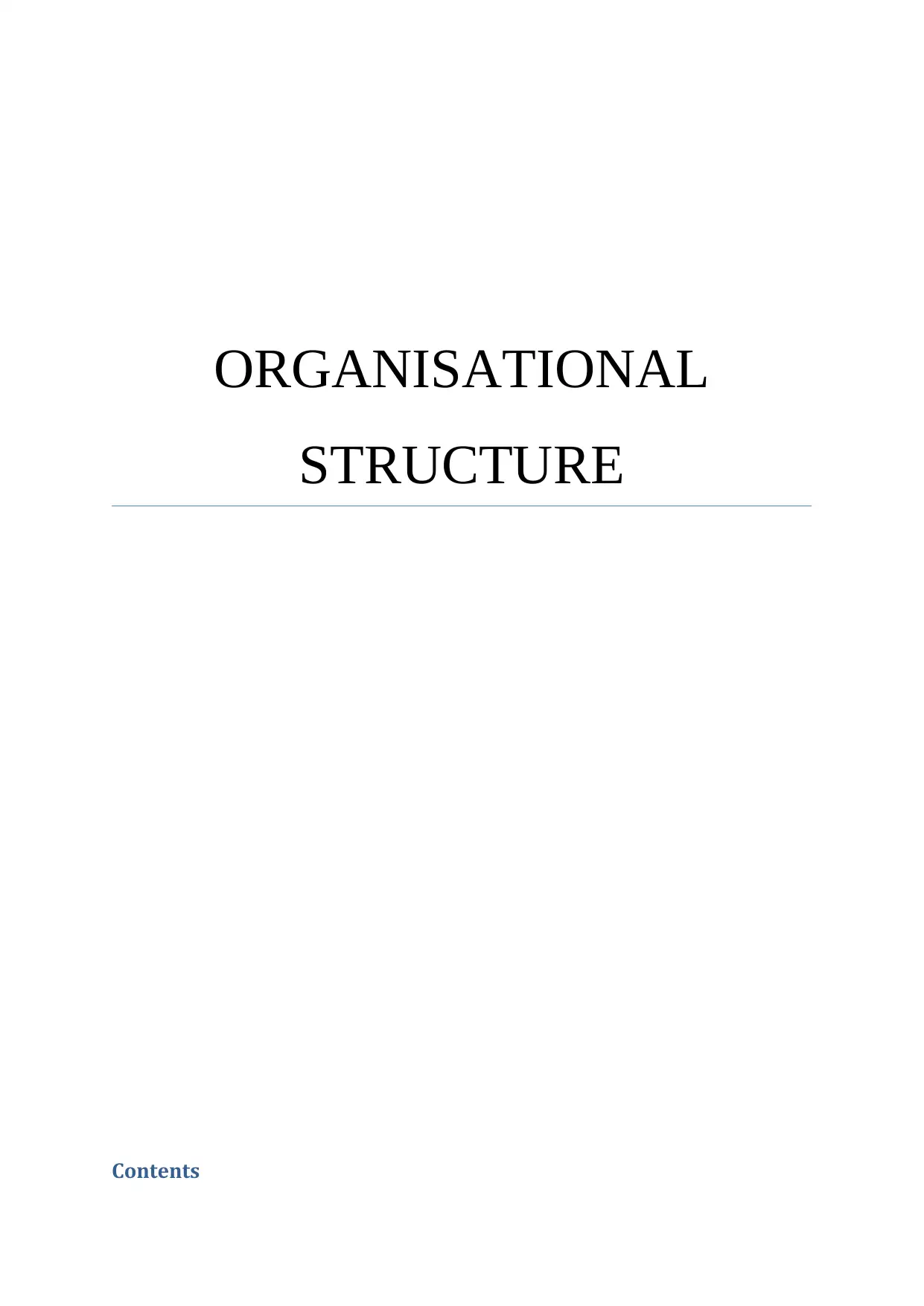
ORGANISATIONAL
STRUCTURE
Contents
STRUCTURE
Contents
Paraphrase This Document
Need a fresh take? Get an instant paraphrase of this document with our AI Paraphraser
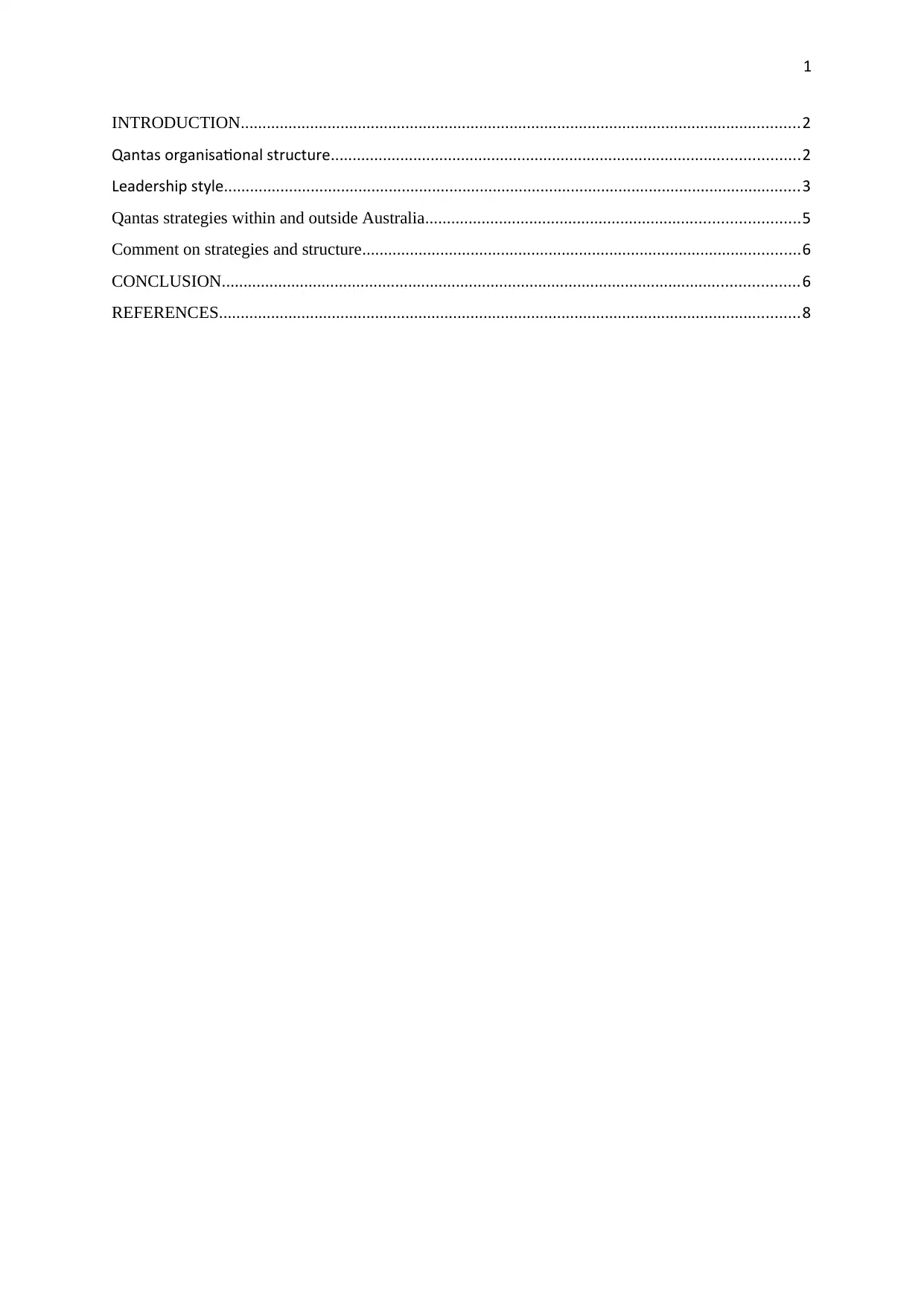
1
INTRODUCTION.................................................................................................................................2
Qantas organisational structure............................................................................................................2
Leadership style.....................................................................................................................................3
Qantas strategies within and outside Australia......................................................................................5
Comment on strategies and structure.....................................................................................................6
CONCLUSION.....................................................................................................................................6
REFERENCES......................................................................................................................................8
INTRODUCTION.................................................................................................................................2
Qantas organisational structure............................................................................................................2
Leadership style.....................................................................................................................................3
Qantas strategies within and outside Australia......................................................................................5
Comment on strategies and structure.....................................................................................................6
CONCLUSION.....................................................................................................................................6
REFERENCES......................................................................................................................................8
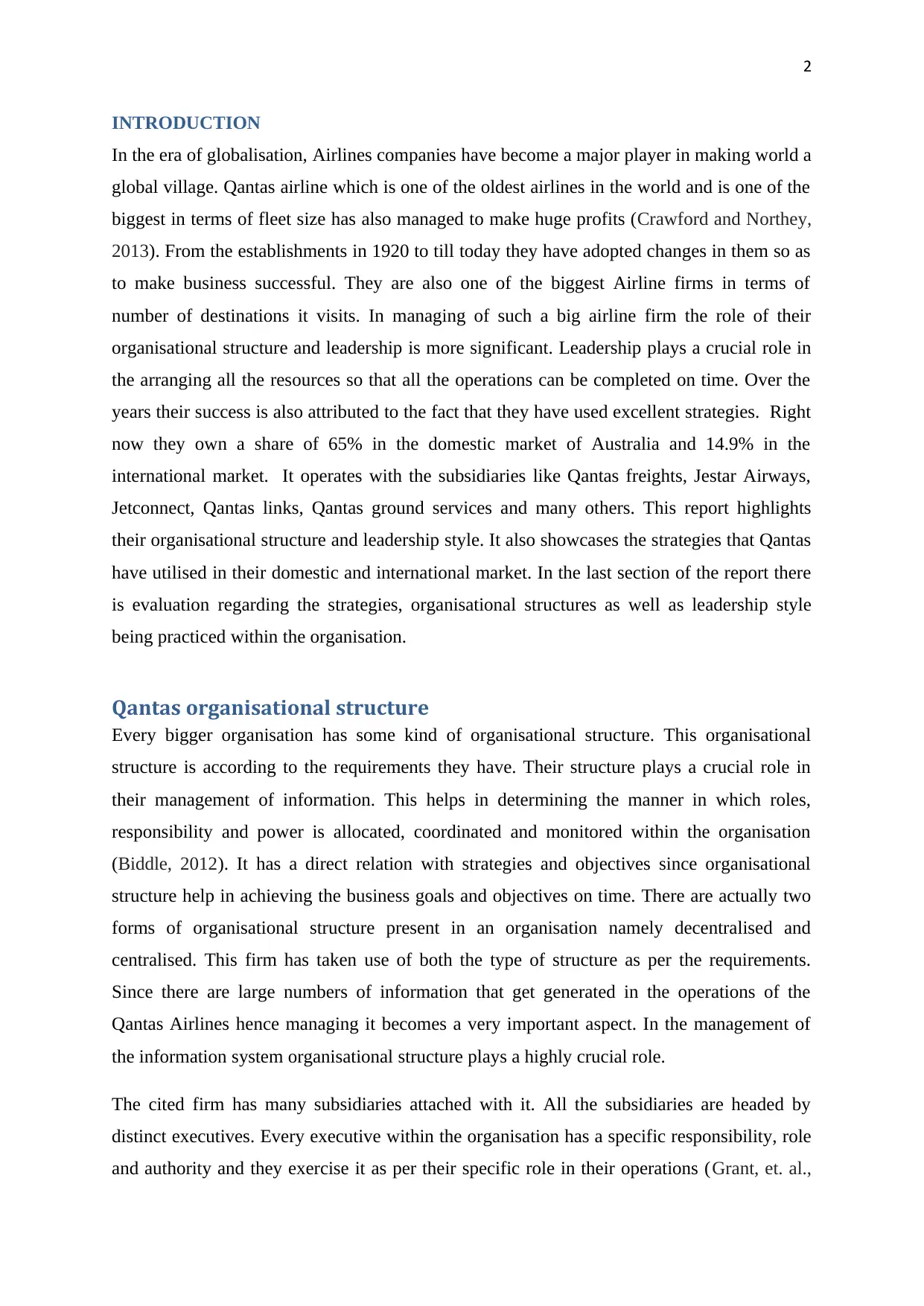
2
INTRODUCTION
In the era of globalisation, Airlines companies have become a major player in making world a
global village. Qantas airline which is one of the oldest airlines in the world and is one of the
biggest in terms of fleet size has also managed to make huge profits (Crawford and Northey,
2013). From the establishments in 1920 to till today they have adopted changes in them so as
to make business successful. They are also one of the biggest Airline firms in terms of
number of destinations it visits. In managing of such a big airline firm the role of their
organisational structure and leadership is more significant. Leadership plays a crucial role in
the arranging all the resources so that all the operations can be completed on time. Over the
years their success is also attributed to the fact that they have used excellent strategies. Right
now they own a share of 65% in the domestic market of Australia and 14.9% in the
international market. It operates with the subsidiaries like Qantas freights, Jestar Airways,
Jetconnect, Qantas links, Qantas ground services and many others. This report highlights
their organisational structure and leadership style. It also showcases the strategies that Qantas
have utilised in their domestic and international market. In the last section of the report there
is evaluation regarding the strategies, organisational structures as well as leadership style
being practiced within the organisation.
Qantas organisational structure
Every bigger organisation has some kind of organisational structure. This organisational
structure is according to the requirements they have. Their structure plays a crucial role in
their management of information. This helps in determining the manner in which roles,
responsibility and power is allocated, coordinated and monitored within the organisation
(Biddle, 2012). It has a direct relation with strategies and objectives since organisational
structure help in achieving the business goals and objectives on time. There are actually two
forms of organisational structure present in an organisation namely decentralised and
centralised. This firm has taken use of both the type of structure as per the requirements.
Since there are large numbers of information that get generated in the operations of the
Qantas Airlines hence managing it becomes a very important aspect. In the management of
the information system organisational structure plays a highly crucial role.
The cited firm has many subsidiaries attached with it. All the subsidiaries are headed by
distinct executives. Every executive within the organisation has a specific responsibility, role
and authority and they exercise it as per their specific role in their operations (Grant, et. al.,
INTRODUCTION
In the era of globalisation, Airlines companies have become a major player in making world a
global village. Qantas airline which is one of the oldest airlines in the world and is one of the
biggest in terms of fleet size has also managed to make huge profits (Crawford and Northey,
2013). From the establishments in 1920 to till today they have adopted changes in them so as
to make business successful. They are also one of the biggest Airline firms in terms of
number of destinations it visits. In managing of such a big airline firm the role of their
organisational structure and leadership is more significant. Leadership plays a crucial role in
the arranging all the resources so that all the operations can be completed on time. Over the
years their success is also attributed to the fact that they have used excellent strategies. Right
now they own a share of 65% in the domestic market of Australia and 14.9% in the
international market. It operates with the subsidiaries like Qantas freights, Jestar Airways,
Jetconnect, Qantas links, Qantas ground services and many others. This report highlights
their organisational structure and leadership style. It also showcases the strategies that Qantas
have utilised in their domestic and international market. In the last section of the report there
is evaluation regarding the strategies, organisational structures as well as leadership style
being practiced within the organisation.
Qantas organisational structure
Every bigger organisation has some kind of organisational structure. This organisational
structure is according to the requirements they have. Their structure plays a crucial role in
their management of information. This helps in determining the manner in which roles,
responsibility and power is allocated, coordinated and monitored within the organisation
(Biddle, 2012). It has a direct relation with strategies and objectives since organisational
structure help in achieving the business goals and objectives on time. There are actually two
forms of organisational structure present in an organisation namely decentralised and
centralised. This firm has taken use of both the type of structure as per the requirements.
Since there are large numbers of information that get generated in the operations of the
Qantas Airlines hence managing it becomes a very important aspect. In the management of
the information system organisational structure plays a highly crucial role.
The cited firm has many subsidiaries attached with it. All the subsidiaries are headed by
distinct executives. Every executive within the organisation has a specific responsibility, role
and authority and they exercise it as per their specific role in their operations (Grant, et. al.,
⊘ This is a preview!⊘
Do you want full access?
Subscribe today to unlock all pages.

Trusted by 1+ million students worldwide
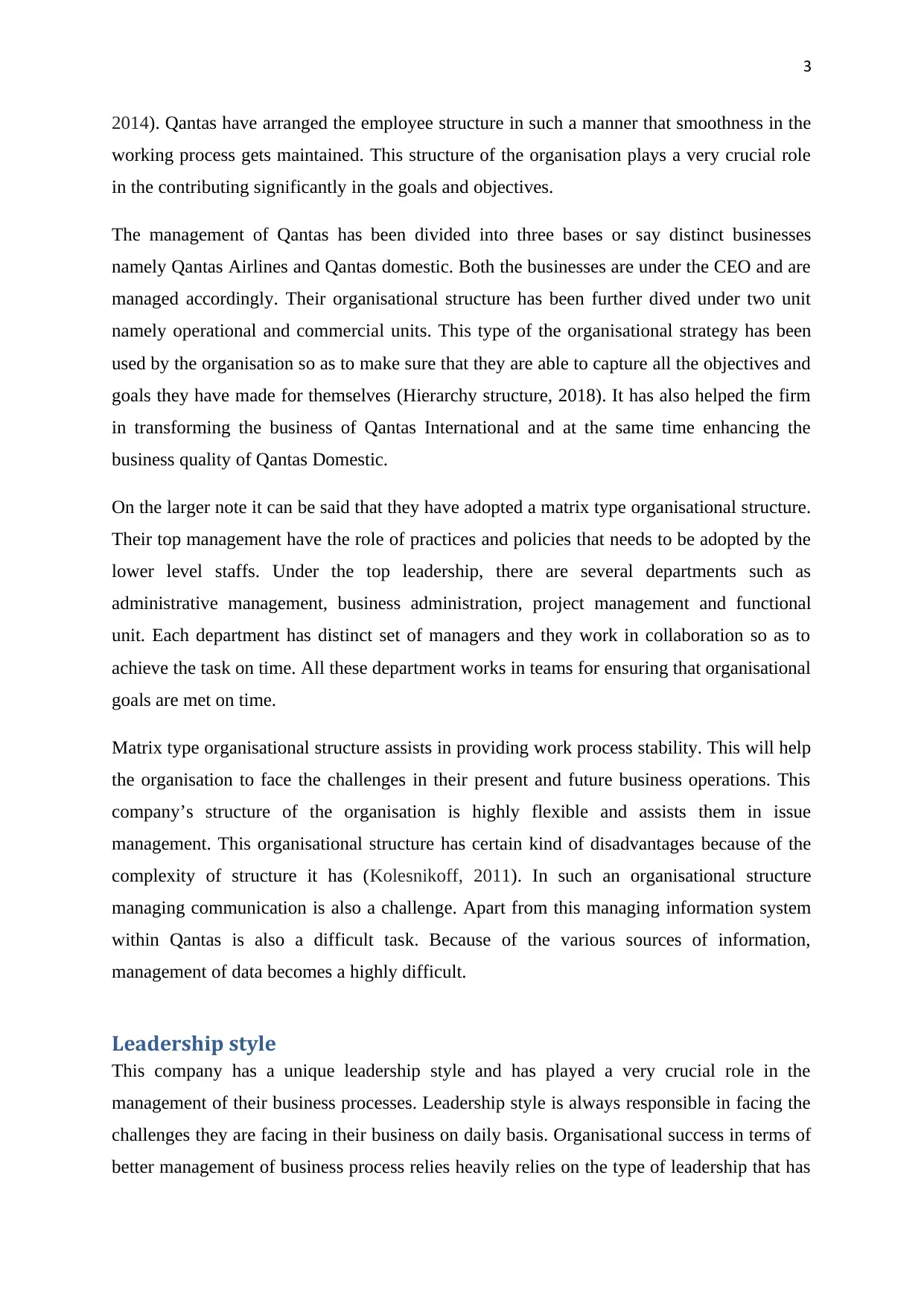
3
2014). Qantas have arranged the employee structure in such a manner that smoothness in the
working process gets maintained. This structure of the organisation plays a very crucial role
in the contributing significantly in the goals and objectives.
The management of Qantas has been divided into three bases or say distinct businesses
namely Qantas Airlines and Qantas domestic. Both the businesses are under the CEO and are
managed accordingly. Their organisational structure has been further dived under two unit
namely operational and commercial units. This type of the organisational strategy has been
used by the organisation so as to make sure that they are able to capture all the objectives and
goals they have made for themselves (Hierarchy structure, 2018). It has also helped the firm
in transforming the business of Qantas International and at the same time enhancing the
business quality of Qantas Domestic.
On the larger note it can be said that they have adopted a matrix type organisational structure.
Their top management have the role of practices and policies that needs to be adopted by the
lower level staffs. Under the top leadership, there are several departments such as
administrative management, business administration, project management and functional
unit. Each department has distinct set of managers and they work in collaboration so as to
achieve the task on time. All these department works in teams for ensuring that organisational
goals are met on time.
Matrix type organisational structure assists in providing work process stability. This will help
the organisation to face the challenges in their present and future business operations. This
company’s structure of the organisation is highly flexible and assists them in issue
management. This organisational structure has certain kind of disadvantages because of the
complexity of structure it has (Kolesnikoff, 2011). In such an organisational structure
managing communication is also a challenge. Apart from this managing information system
within Qantas is also a difficult task. Because of the various sources of information,
management of data becomes a highly difficult.
Leadership style
This company has a unique leadership style and has played a very crucial role in the
management of their business processes. Leadership style is always responsible in facing the
challenges they are facing in their business on daily basis. Organisational success in terms of
better management of business process relies heavily relies on the type of leadership that has
2014). Qantas have arranged the employee structure in such a manner that smoothness in the
working process gets maintained. This structure of the organisation plays a very crucial role
in the contributing significantly in the goals and objectives.
The management of Qantas has been divided into three bases or say distinct businesses
namely Qantas Airlines and Qantas domestic. Both the businesses are under the CEO and are
managed accordingly. Their organisational structure has been further dived under two unit
namely operational and commercial units. This type of the organisational strategy has been
used by the organisation so as to make sure that they are able to capture all the objectives and
goals they have made for themselves (Hierarchy structure, 2018). It has also helped the firm
in transforming the business of Qantas International and at the same time enhancing the
business quality of Qantas Domestic.
On the larger note it can be said that they have adopted a matrix type organisational structure.
Their top management have the role of practices and policies that needs to be adopted by the
lower level staffs. Under the top leadership, there are several departments such as
administrative management, business administration, project management and functional
unit. Each department has distinct set of managers and they work in collaboration so as to
achieve the task on time. All these department works in teams for ensuring that organisational
goals are met on time.
Matrix type organisational structure assists in providing work process stability. This will help
the organisation to face the challenges in their present and future business operations. This
company’s structure of the organisation is highly flexible and assists them in issue
management. This organisational structure has certain kind of disadvantages because of the
complexity of structure it has (Kolesnikoff, 2011). In such an organisational structure
managing communication is also a challenge. Apart from this managing information system
within Qantas is also a difficult task. Because of the various sources of information,
management of data becomes a highly difficult.
Leadership style
This company has a unique leadership style and has played a very crucial role in the
management of their business processes. Leadership style is always responsible in facing the
challenges they are facing in their business on daily basis. Organisational success in terms of
better management of business process relies heavily relies on the type of leadership that has
Paraphrase This Document
Need a fresh take? Get an instant paraphrase of this document with our AI Paraphraser
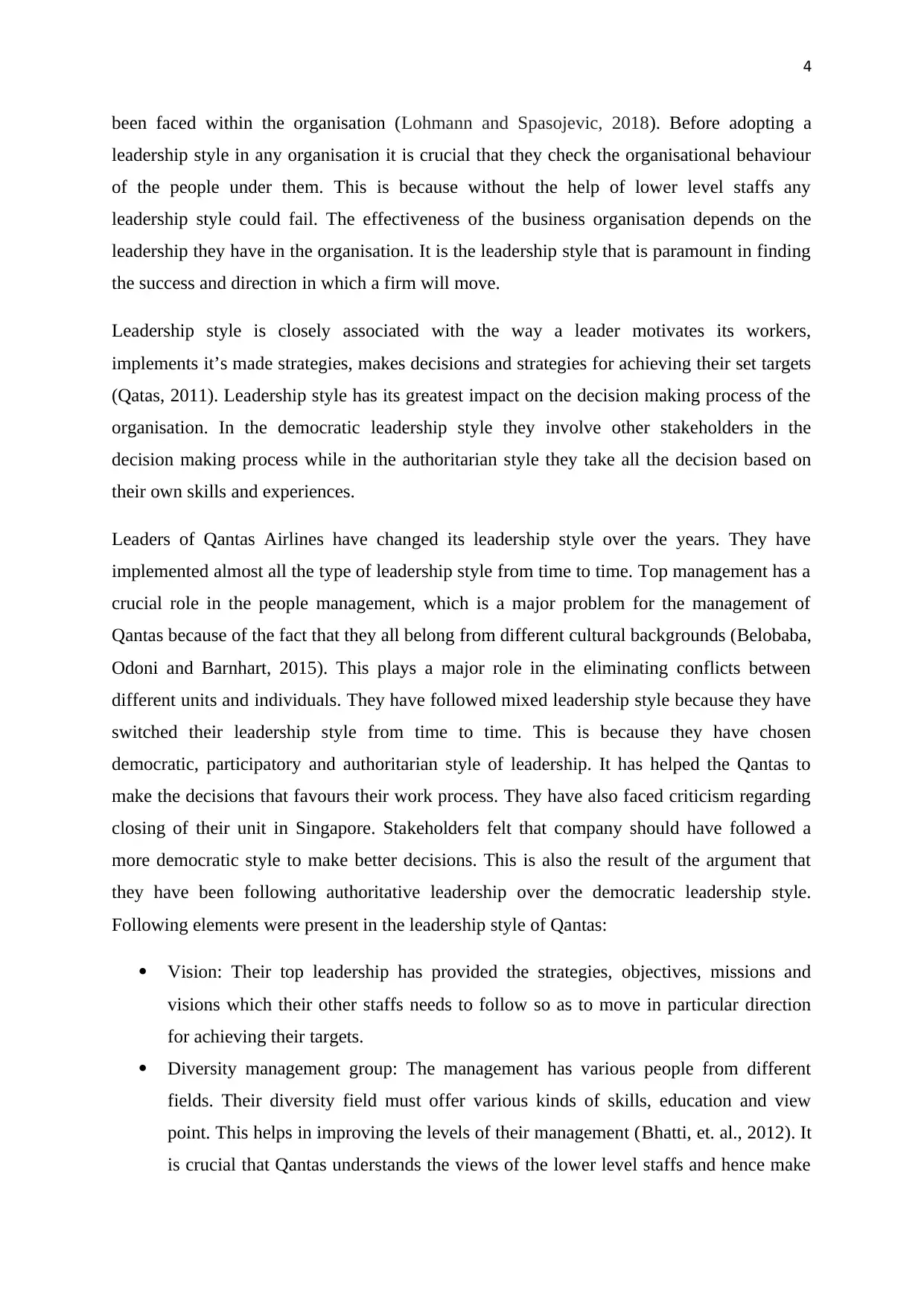
4
been faced within the organisation (Lohmann and Spasojevic, 2018). Before adopting a
leadership style in any organisation it is crucial that they check the organisational behaviour
of the people under them. This is because without the help of lower level staffs any
leadership style could fail. The effectiveness of the business organisation depends on the
leadership they have in the organisation. It is the leadership style that is paramount in finding
the success and direction in which a firm will move.
Leadership style is closely associated with the way a leader motivates its workers,
implements it’s made strategies, makes decisions and strategies for achieving their set targets
(Qatas, 2011). Leadership style has its greatest impact on the decision making process of the
organisation. In the democratic leadership style they involve other stakeholders in the
decision making process while in the authoritarian style they take all the decision based on
their own skills and experiences.
Leaders of Qantas Airlines have changed its leadership style over the years. They have
implemented almost all the type of leadership style from time to time. Top management has a
crucial role in the people management, which is a major problem for the management of
Qantas because of the fact that they all belong from different cultural backgrounds (Belobaba,
Odoni and Barnhart, 2015). This plays a major role in the eliminating conflicts between
different units and individuals. They have followed mixed leadership style because they have
switched their leadership style from time to time. This is because they have chosen
democratic, participatory and authoritarian style of leadership. It has helped the Qantas to
make the decisions that favours their work process. They have also faced criticism regarding
closing of their unit in Singapore. Stakeholders felt that company should have followed a
more democratic style to make better decisions. This is also the result of the argument that
they have been following authoritative leadership over the democratic leadership style.
Following elements were present in the leadership style of Qantas:
Vision: Their top leadership has provided the strategies, objectives, missions and
visions which their other staffs needs to follow so as to move in particular direction
for achieving their targets.
Diversity management group: The management has various people from different
fields. Their diversity field must offer various kinds of skills, education and view
point. This helps in improving the levels of their management (Bhatti, et. al., 2012). It
is crucial that Qantas understands the views of the lower level staffs and hence make
been faced within the organisation (Lohmann and Spasojevic, 2018). Before adopting a
leadership style in any organisation it is crucial that they check the organisational behaviour
of the people under them. This is because without the help of lower level staffs any
leadership style could fail. The effectiveness of the business organisation depends on the
leadership they have in the organisation. It is the leadership style that is paramount in finding
the success and direction in which a firm will move.
Leadership style is closely associated with the way a leader motivates its workers,
implements it’s made strategies, makes decisions and strategies for achieving their set targets
(Qatas, 2011). Leadership style has its greatest impact on the decision making process of the
organisation. In the democratic leadership style they involve other stakeholders in the
decision making process while in the authoritarian style they take all the decision based on
their own skills and experiences.
Leaders of Qantas Airlines have changed its leadership style over the years. They have
implemented almost all the type of leadership style from time to time. Top management has a
crucial role in the people management, which is a major problem for the management of
Qantas because of the fact that they all belong from different cultural backgrounds (Belobaba,
Odoni and Barnhart, 2015). This plays a major role in the eliminating conflicts between
different units and individuals. They have followed mixed leadership style because they have
switched their leadership style from time to time. This is because they have chosen
democratic, participatory and authoritarian style of leadership. It has helped the Qantas to
make the decisions that favours their work process. They have also faced criticism regarding
closing of their unit in Singapore. Stakeholders felt that company should have followed a
more democratic style to make better decisions. This is also the result of the argument that
they have been following authoritative leadership over the democratic leadership style.
Following elements were present in the leadership style of Qantas:
Vision: Their top leadership has provided the strategies, objectives, missions and
visions which their other staffs needs to follow so as to move in particular direction
for achieving their targets.
Diversity management group: The management has various people from different
fields. Their diversity field must offer various kinds of skills, education and view
point. This helps in improving the levels of their management (Bhatti, et. al., 2012). It
is crucial that Qantas understands the views of the lower level staffs and hence make
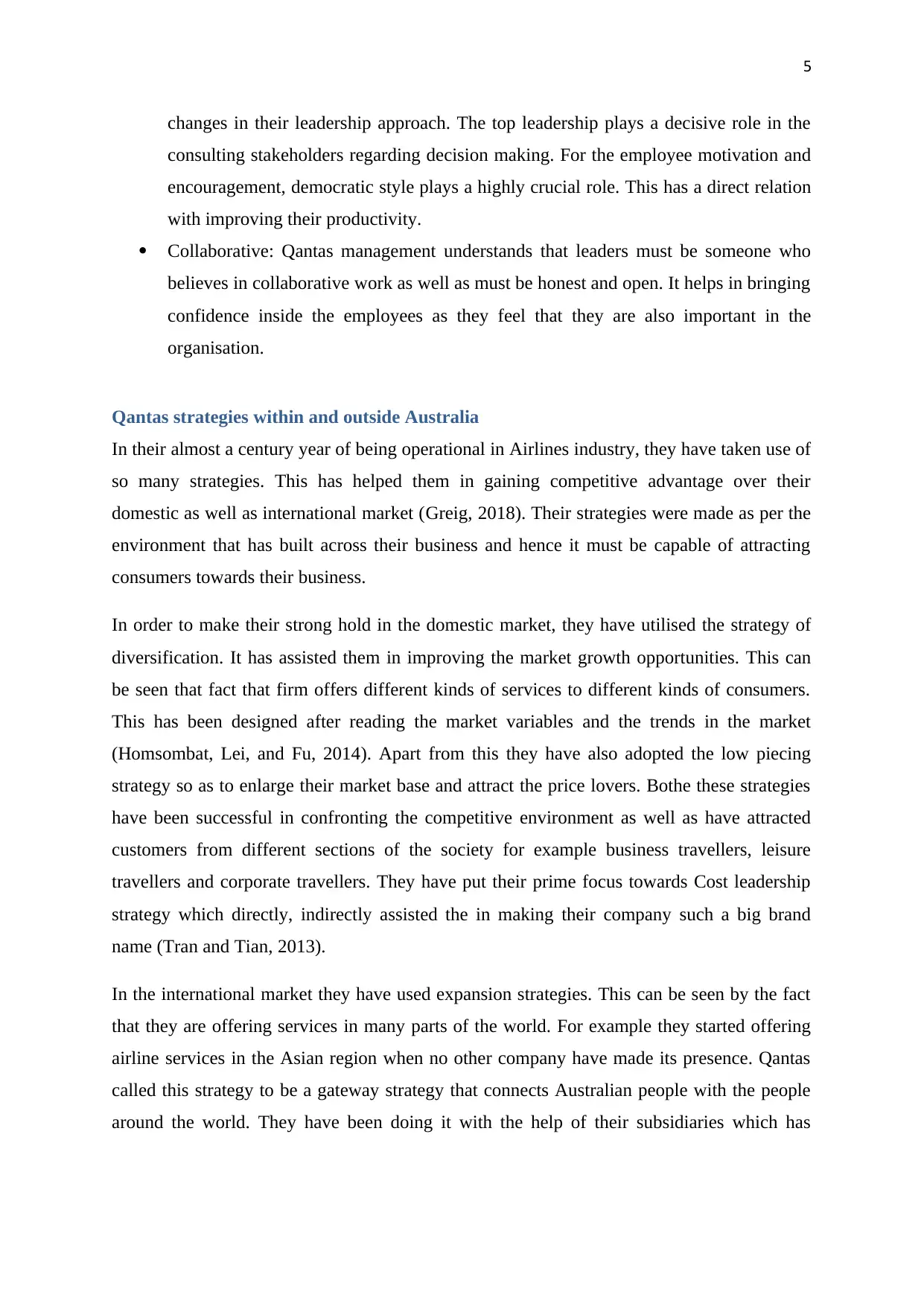
5
changes in their leadership approach. The top leadership plays a decisive role in the
consulting stakeholders regarding decision making. For the employee motivation and
encouragement, democratic style plays a highly crucial role. This has a direct relation
with improving their productivity.
Collaborative: Qantas management understands that leaders must be someone who
believes in collaborative work as well as must be honest and open. It helps in bringing
confidence inside the employees as they feel that they are also important in the
organisation.
Qantas strategies within and outside Australia
In their almost a century year of being operational in Airlines industry, they have taken use of
so many strategies. This has helped them in gaining competitive advantage over their
domestic as well as international market (Greig, 2018). Their strategies were made as per the
environment that has built across their business and hence it must be capable of attracting
consumers towards their business.
In order to make their strong hold in the domestic market, they have utilised the strategy of
diversification. It has assisted them in improving the market growth opportunities. This can
be seen that fact that firm offers different kinds of services to different kinds of consumers.
This has been designed after reading the market variables and the trends in the market
(Homsombat, Lei, and Fu, 2014). Apart from this they have also adopted the low piecing
strategy so as to enlarge their market base and attract the price lovers. Bothe these strategies
have been successful in confronting the competitive environment as well as have attracted
customers from different sections of the society for example business travellers, leisure
travellers and corporate travellers. They have put their prime focus towards Cost leadership
strategy which directly, indirectly assisted the in making their company such a big brand
name (Tran and Tian, 2013).
In the international market they have used expansion strategies. This can be seen by the fact
that they are offering services in many parts of the world. For example they started offering
airline services in the Asian region when no other company have made its presence. Qantas
called this strategy to be a gateway strategy that connects Australian people with the people
around the world. They have been doing it with the help of their subsidiaries which has
changes in their leadership approach. The top leadership plays a decisive role in the
consulting stakeholders regarding decision making. For the employee motivation and
encouragement, democratic style plays a highly crucial role. This has a direct relation
with improving their productivity.
Collaborative: Qantas management understands that leaders must be someone who
believes in collaborative work as well as must be honest and open. It helps in bringing
confidence inside the employees as they feel that they are also important in the
organisation.
Qantas strategies within and outside Australia
In their almost a century year of being operational in Airlines industry, they have taken use of
so many strategies. This has helped them in gaining competitive advantage over their
domestic as well as international market (Greig, 2018). Their strategies were made as per the
environment that has built across their business and hence it must be capable of attracting
consumers towards their business.
In order to make their strong hold in the domestic market, they have utilised the strategy of
diversification. It has assisted them in improving the market growth opportunities. This can
be seen that fact that firm offers different kinds of services to different kinds of consumers.
This has been designed after reading the market variables and the trends in the market
(Homsombat, Lei, and Fu, 2014). Apart from this they have also adopted the low piecing
strategy so as to enlarge their market base and attract the price lovers. Bothe these strategies
have been successful in confronting the competitive environment as well as have attracted
customers from different sections of the society for example business travellers, leisure
travellers and corporate travellers. They have put their prime focus towards Cost leadership
strategy which directly, indirectly assisted the in making their company such a big brand
name (Tran and Tian, 2013).
In the international market they have used expansion strategies. This can be seen by the fact
that they are offering services in many parts of the world. For example they started offering
airline services in the Asian region when no other company have made its presence. Qantas
called this strategy to be a gateway strategy that connects Australian people with the people
around the world. They have been doing it with the help of their subsidiaries which has
⊘ This is a preview!⊘
Do you want full access?
Subscribe today to unlock all pages.

Trusted by 1+ million students worldwide
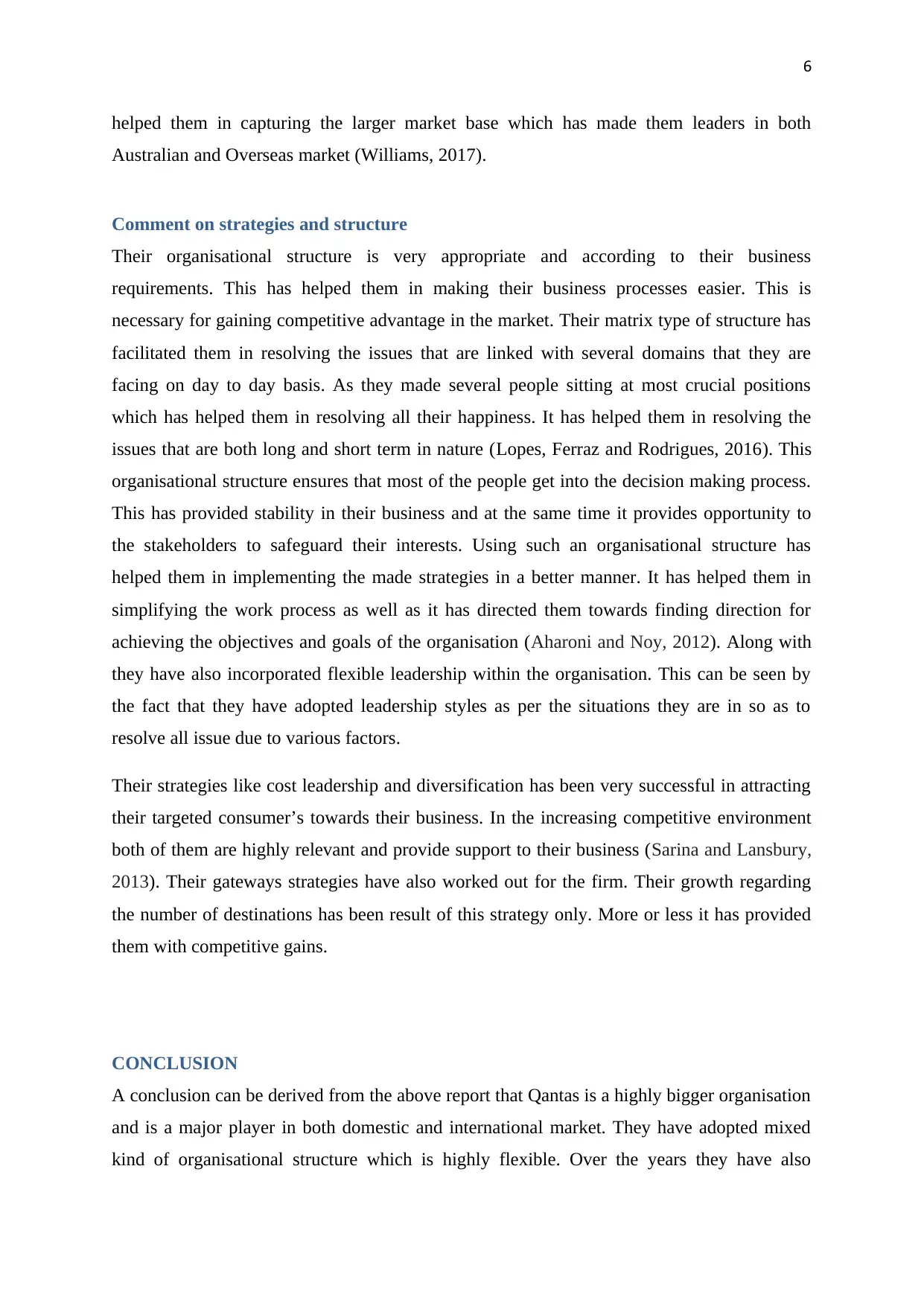
6
helped them in capturing the larger market base which has made them leaders in both
Australian and Overseas market (Williams, 2017).
Comment on strategies and structure
Their organisational structure is very appropriate and according to their business
requirements. This has helped them in making their business processes easier. This is
necessary for gaining competitive advantage in the market. Their matrix type of structure has
facilitated them in resolving the issues that are linked with several domains that they are
facing on day to day basis. As they made several people sitting at most crucial positions
which has helped them in resolving all their happiness. It has helped them in resolving the
issues that are both long and short term in nature (Lopes, Ferraz and Rodrigues, 2016). This
organisational structure ensures that most of the people get into the decision making process.
This has provided stability in their business and at the same time it provides opportunity to
the stakeholders to safeguard their interests. Using such an organisational structure has
helped them in implementing the made strategies in a better manner. It has helped them in
simplifying the work process as well as it has directed them towards finding direction for
achieving the objectives and goals of the organisation (Aharoni and Noy, 2012). Along with
they have also incorporated flexible leadership within the organisation. This can be seen by
the fact that they have adopted leadership styles as per the situations they are in so as to
resolve all issue due to various factors.
Their strategies like cost leadership and diversification has been very successful in attracting
their targeted consumer’s towards their business. In the increasing competitive environment
both of them are highly relevant and provide support to their business (Sarina and Lansbury,
2013). Their gateways strategies have also worked out for the firm. Their growth regarding
the number of destinations has been result of this strategy only. More or less it has provided
them with competitive gains.
CONCLUSION
A conclusion can be derived from the above report that Qantas is a highly bigger organisation
and is a major player in both domestic and international market. They have adopted mixed
kind of organisational structure which is highly flexible. Over the years they have also
helped them in capturing the larger market base which has made them leaders in both
Australian and Overseas market (Williams, 2017).
Comment on strategies and structure
Their organisational structure is very appropriate and according to their business
requirements. This has helped them in making their business processes easier. This is
necessary for gaining competitive advantage in the market. Their matrix type of structure has
facilitated them in resolving the issues that are linked with several domains that they are
facing on day to day basis. As they made several people sitting at most crucial positions
which has helped them in resolving all their happiness. It has helped them in resolving the
issues that are both long and short term in nature (Lopes, Ferraz and Rodrigues, 2016). This
organisational structure ensures that most of the people get into the decision making process.
This has provided stability in their business and at the same time it provides opportunity to
the stakeholders to safeguard their interests. Using such an organisational structure has
helped them in implementing the made strategies in a better manner. It has helped them in
simplifying the work process as well as it has directed them towards finding direction for
achieving the objectives and goals of the organisation (Aharoni and Noy, 2012). Along with
they have also incorporated flexible leadership within the organisation. This can be seen by
the fact that they have adopted leadership styles as per the situations they are in so as to
resolve all issue due to various factors.
Their strategies like cost leadership and diversification has been very successful in attracting
their targeted consumer’s towards their business. In the increasing competitive environment
both of them are highly relevant and provide support to their business (Sarina and Lansbury,
2013). Their gateways strategies have also worked out for the firm. Their growth regarding
the number of destinations has been result of this strategy only. More or less it has provided
them with competitive gains.
CONCLUSION
A conclusion can be derived from the above report that Qantas is a highly bigger organisation
and is a major player in both domestic and international market. They have adopted mixed
kind of organisational structure which is highly flexible. Over the years they have also
Paraphrase This Document
Need a fresh take? Get an instant paraphrase of this document with our AI Paraphraser
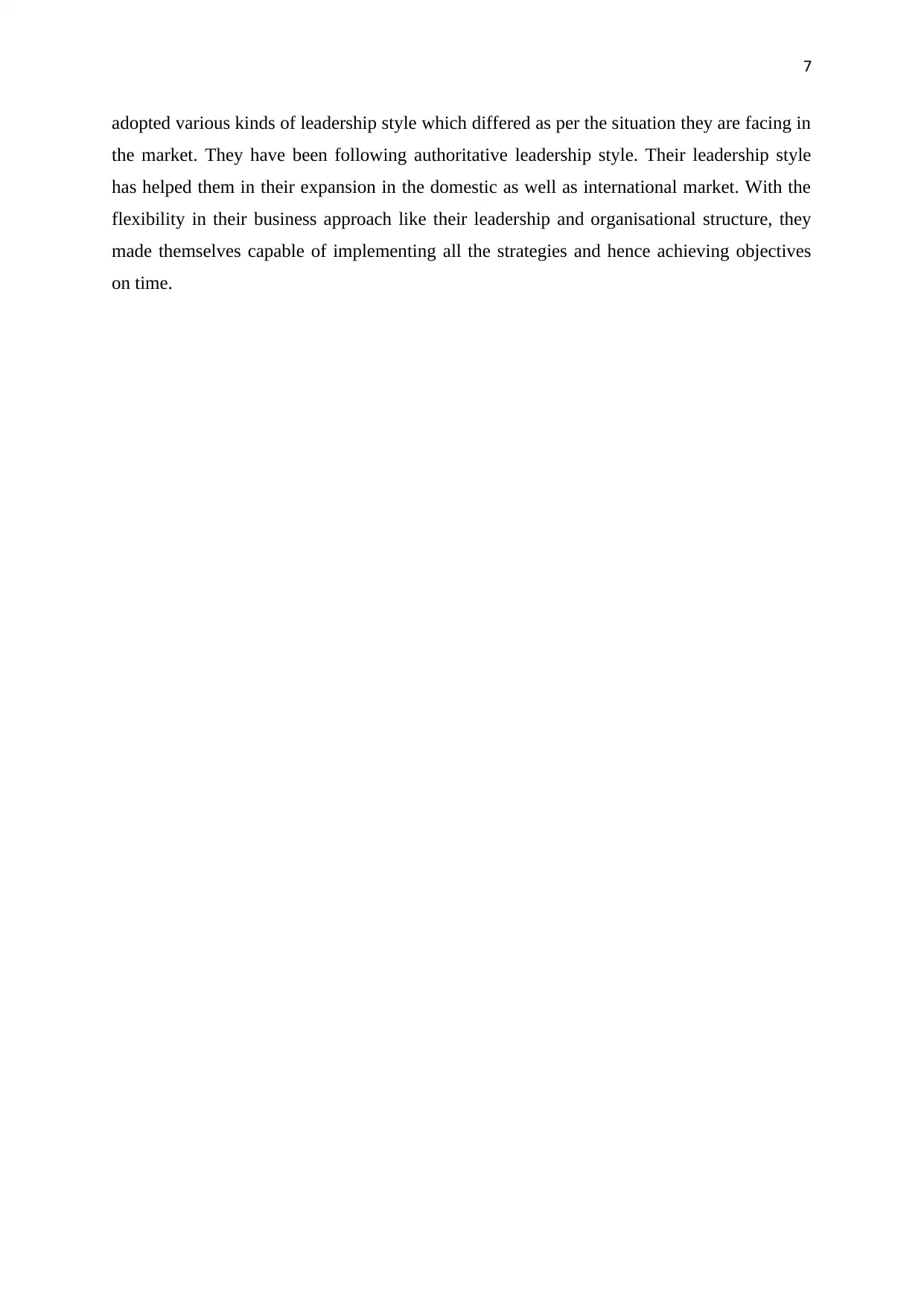
7
adopted various kinds of leadership style which differed as per the situation they are facing in
the market. They have been following authoritative leadership style. Their leadership style
has helped them in their expansion in the domestic as well as international market. With the
flexibility in their business approach like their leadership and organisational structure, they
made themselves capable of implementing all the strategies and hence achieving objectives
on time.
adopted various kinds of leadership style which differed as per the situation they are facing in
the market. They have been following authoritative leadership style. Their leadership style
has helped them in their expansion in the domestic as well as international market. With the
flexibility in their business approach like their leadership and organisational structure, they
made themselves capable of implementing all the strategies and hence achieving objectives
on time.
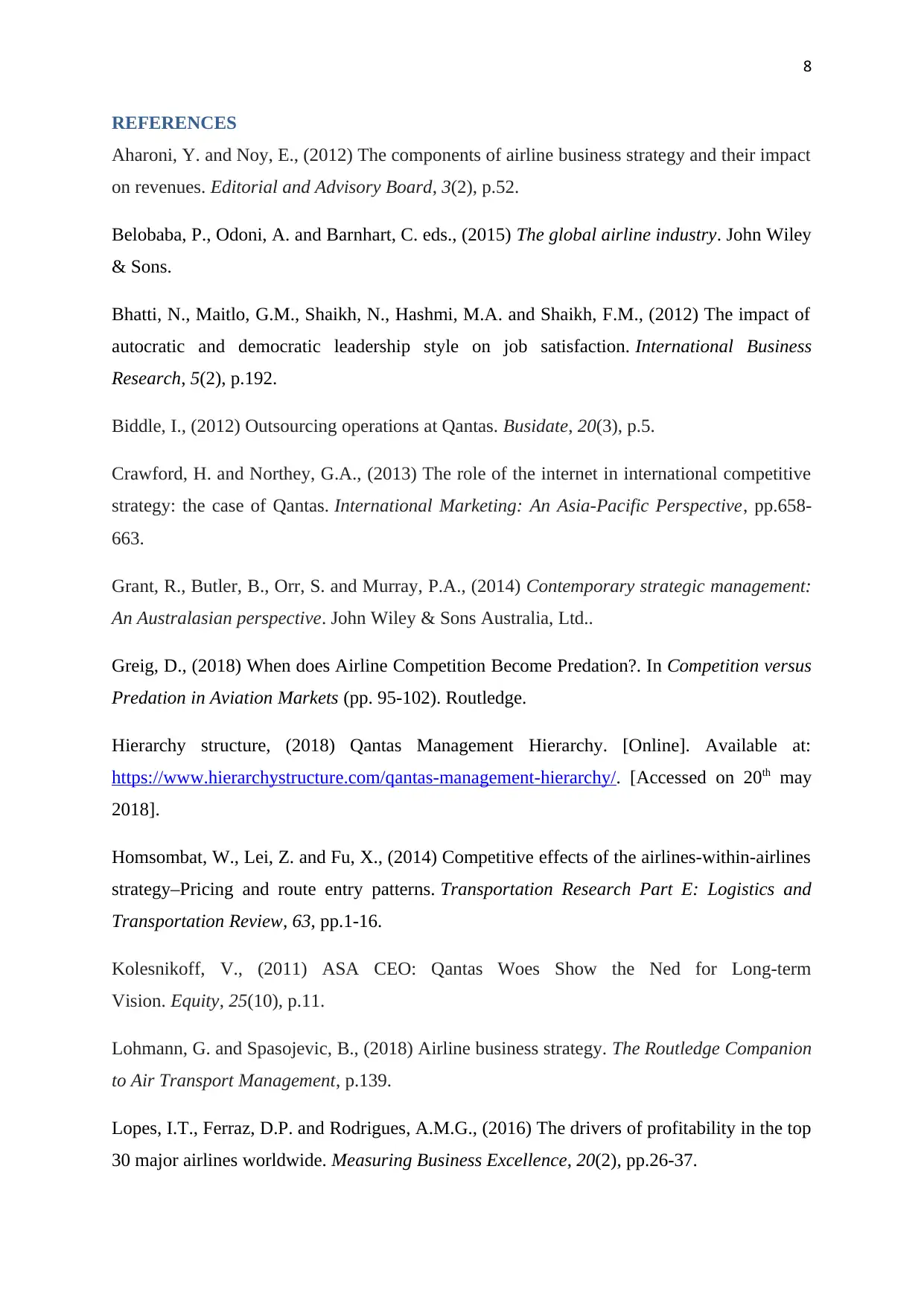
8
REFERENCES
Aharoni, Y. and Noy, E., (2012) The components of airline business strategy and their impact
on revenues. Editorial and Advisory Board, 3(2), p.52.
Belobaba, P., Odoni, A. and Barnhart, C. eds., (2015) The global airline industry. John Wiley
& Sons.
Bhatti, N., Maitlo, G.M., Shaikh, N., Hashmi, M.A. and Shaikh, F.M., (2012) The impact of
autocratic and democratic leadership style on job satisfaction. International Business
Research, 5(2), p.192.
Biddle, I., (2012) Outsourcing operations at Qantas. Busidate, 20(3), p.5.
Crawford, H. and Northey, G.A., (2013) The role of the internet in international competitive
strategy: the case of Qantas. International Marketing: An Asia-Pacific Perspective, pp.658-
663.
Grant, R., Butler, B., Orr, S. and Murray, P.A., (2014) Contemporary strategic management:
An Australasian perspective. John Wiley & Sons Australia, Ltd..
Greig, D., (2018) When does Airline Competition Become Predation?. In Competition versus
Predation in Aviation Markets (pp. 95-102). Routledge.
Hierarchy structure, (2018) Qantas Management Hierarchy. [Online]. Available at:
https://www.hierarchystructure.com/qantas-management-hierarchy/. [Accessed on 20th may
2018].
Homsombat, W., Lei, Z. and Fu, X., (2014) Competitive effects of the airlines-within-airlines
strategy–Pricing and route entry patterns. Transportation Research Part E: Logistics and
Transportation Review, 63, pp.1-16.
Kolesnikoff, V., (2011) ASA CEO: Qantas Woes Show the Ned for Long-term
Vision. Equity, 25(10), p.11.
Lohmann, G. and Spasojevic, B., (2018) Airline business strategy. The Routledge Companion
to Air Transport Management, p.139.
Lopes, I.T., Ferraz, D.P. and Rodrigues, A.M.G., (2016) The drivers of profitability in the top
30 major airlines worldwide. Measuring Business Excellence, 20(2), pp.26-37.
REFERENCES
Aharoni, Y. and Noy, E., (2012) The components of airline business strategy and their impact
on revenues. Editorial and Advisory Board, 3(2), p.52.
Belobaba, P., Odoni, A. and Barnhart, C. eds., (2015) The global airline industry. John Wiley
& Sons.
Bhatti, N., Maitlo, G.M., Shaikh, N., Hashmi, M.A. and Shaikh, F.M., (2012) The impact of
autocratic and democratic leadership style on job satisfaction. International Business
Research, 5(2), p.192.
Biddle, I., (2012) Outsourcing operations at Qantas. Busidate, 20(3), p.5.
Crawford, H. and Northey, G.A., (2013) The role of the internet in international competitive
strategy: the case of Qantas. International Marketing: An Asia-Pacific Perspective, pp.658-
663.
Grant, R., Butler, B., Orr, S. and Murray, P.A., (2014) Contemporary strategic management:
An Australasian perspective. John Wiley & Sons Australia, Ltd..
Greig, D., (2018) When does Airline Competition Become Predation?. In Competition versus
Predation in Aviation Markets (pp. 95-102). Routledge.
Hierarchy structure, (2018) Qantas Management Hierarchy. [Online]. Available at:
https://www.hierarchystructure.com/qantas-management-hierarchy/. [Accessed on 20th may
2018].
Homsombat, W., Lei, Z. and Fu, X., (2014) Competitive effects of the airlines-within-airlines
strategy–Pricing and route entry patterns. Transportation Research Part E: Logistics and
Transportation Review, 63, pp.1-16.
Kolesnikoff, V., (2011) ASA CEO: Qantas Woes Show the Ned for Long-term
Vision. Equity, 25(10), p.11.
Lohmann, G. and Spasojevic, B., (2018) Airline business strategy. The Routledge Companion
to Air Transport Management, p.139.
Lopes, I.T., Ferraz, D.P. and Rodrigues, A.M.G., (2016) The drivers of profitability in the top
30 major airlines worldwide. Measuring Business Excellence, 20(2), pp.26-37.
⊘ This is a preview!⊘
Do you want full access?
Subscribe today to unlock all pages.

Trusted by 1+ million students worldwide
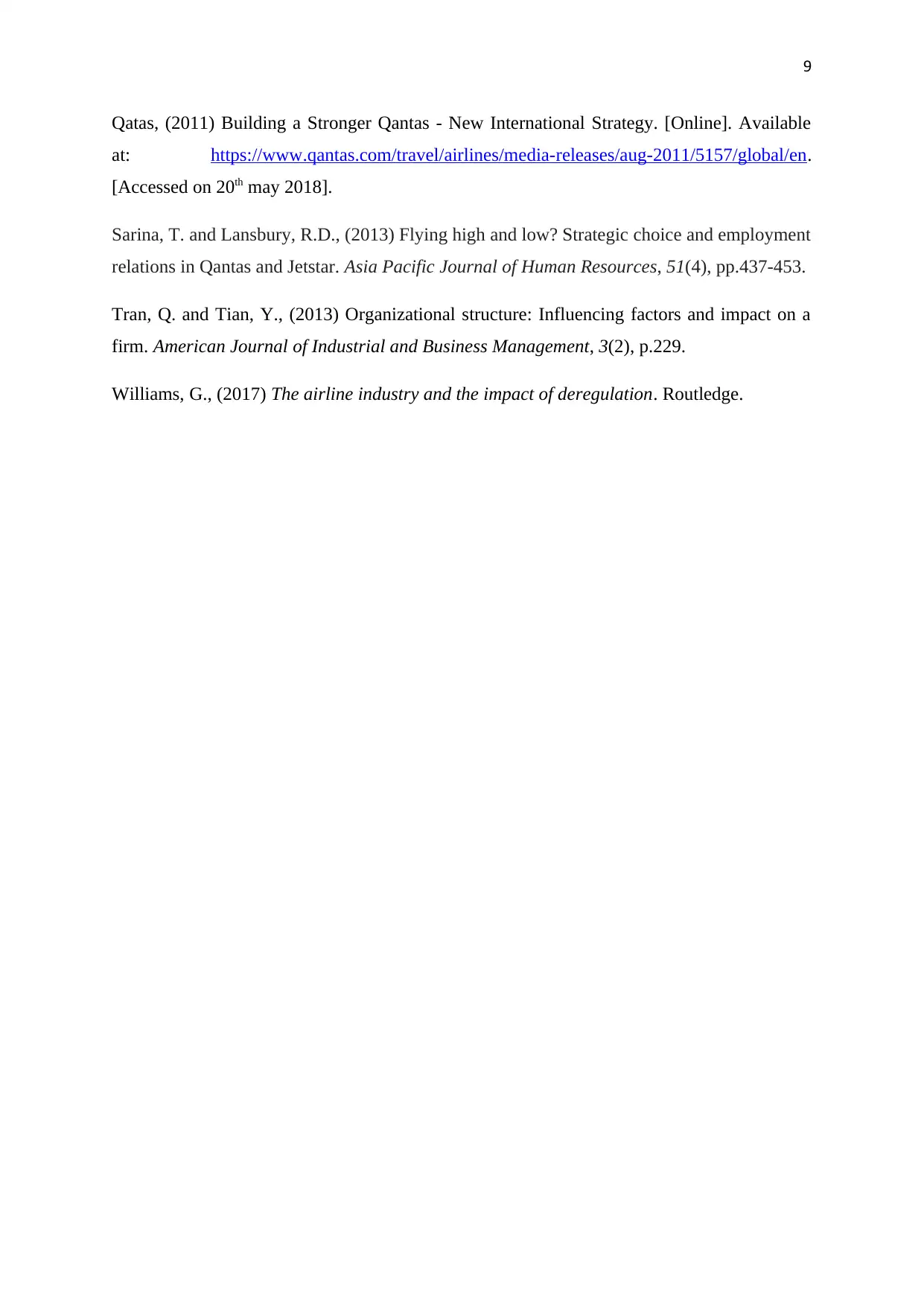
9
Qatas, (2011) Building a Stronger Qantas - New International Strategy. [Online]. Available
at: https://www.qantas.com/travel/airlines/media-releases/aug-2011/5157/global/en.
[Accessed on 20th may 2018].
Sarina, T. and Lansbury, R.D., (2013) Flying high and low? Strategic choice and employment
relations in Qantas and Jetstar. Asia Pacific Journal of Human Resources, 51(4), pp.437-453.
Tran, Q. and Tian, Y., (2013) Organizational structure: Influencing factors and impact on a
firm. American Journal of Industrial and Business Management, 3(2), p.229.
Williams, G., (2017) The airline industry and the impact of deregulation. Routledge.
Qatas, (2011) Building a Stronger Qantas - New International Strategy. [Online]. Available
at: https://www.qantas.com/travel/airlines/media-releases/aug-2011/5157/global/en.
[Accessed on 20th may 2018].
Sarina, T. and Lansbury, R.D., (2013) Flying high and low? Strategic choice and employment
relations in Qantas and Jetstar. Asia Pacific Journal of Human Resources, 51(4), pp.437-453.
Tran, Q. and Tian, Y., (2013) Organizational structure: Influencing factors and impact on a
firm. American Journal of Industrial and Business Management, 3(2), p.229.
Williams, G., (2017) The airline industry and the impact of deregulation. Routledge.
1 out of 10
Related Documents
Your All-in-One AI-Powered Toolkit for Academic Success.
+13062052269
info@desklib.com
Available 24*7 on WhatsApp / Email
![[object Object]](/_next/static/media/star-bottom.7253800d.svg)
Unlock your academic potential
Copyright © 2020–2025 A2Z Services. All Rights Reserved. Developed and managed by ZUCOL.





